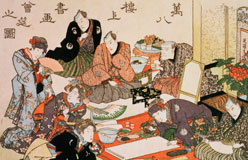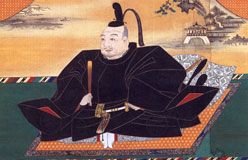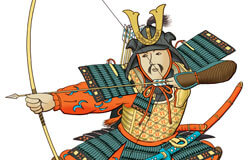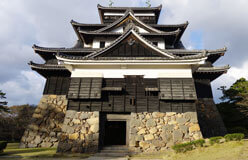For thousands of years, the Japanese lived in clans, which are large groups of related families. Leaders of each clan ruled different parts of the country, and the clans constantly fought one another for land and power.
By A.D. 400, the Yamato clan had won control of most of the country. The leader of the Yamato clan became emperor of Japan. Although other clans continued to control their own lands, they owed their loyalty to the Yamato leader.
By the late 700s, the emperor and his family lived in splendid palaces in the city of Nara. Key clan members became nobles in the emperor’s court, governing their former lands in the emperor’s name. The noble families who belonged to the emperor’s court lived there as well. Members of the court did not work with their hands as peasant farmers or craftspeople did. Instead, they spent their days painting, writing poetry, and admiring nature.








